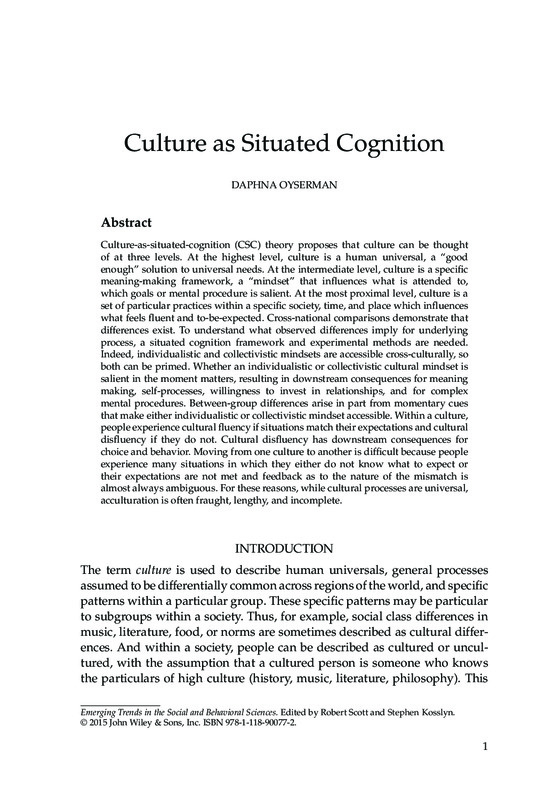Culture as Situated Cognition
Title
Culture as Situated Cognition
Author
Oyserman, Daphna
Research Area
Culture
Topic
Culture and Cognition
Abstract
Culture‐as‐situated‐cognition (CSC) theory proposes that culture can be thought of at three levels. At the highest level, culture is a human universal, a “good enough” solution to universal needs. At the intermediate level, culture is a specific meaning‐making framework, a “mindset” that influences what is attended to, which goals or mental procedure is salient. At the most proximal level, culture is a set of particular practices within a specific society, time, and place which influences what feels fluent and to‐be‐expected. Cross‐national comparisons demonstrate that differences exist. To understand what observed differences imply for underlying process, a situated cognition framework and experimental methods are needed. Indeed, individualistic and collectivistic mindsets are accessible cross‐culturally, so both can be primed. Whether an individualistic or collectivistic cultural mindset is salient in the moment matters, resulting in downstream consequences for meaning making, self‐processes, willingness to invest in relationships, and for complex mental procedures. Between‐group differences arise in part from momentary cues that make either individualistic or collectivistic mindset accessible. Within a culture, people experience cultural fluency if situations match their expectations and cultural disfluency if they do not. Cultural disfluency has downstream consequences for choice and behavior. Moving from one culture to another is difficult because people experience many situations in which they either do not know what to expect or their expectations are not met and feedback as to the nature of the mismatch is almost always ambiguous. For these reasons, while cultural processes are universal, acculturation is often fraught, lengthy, and incomplete.
